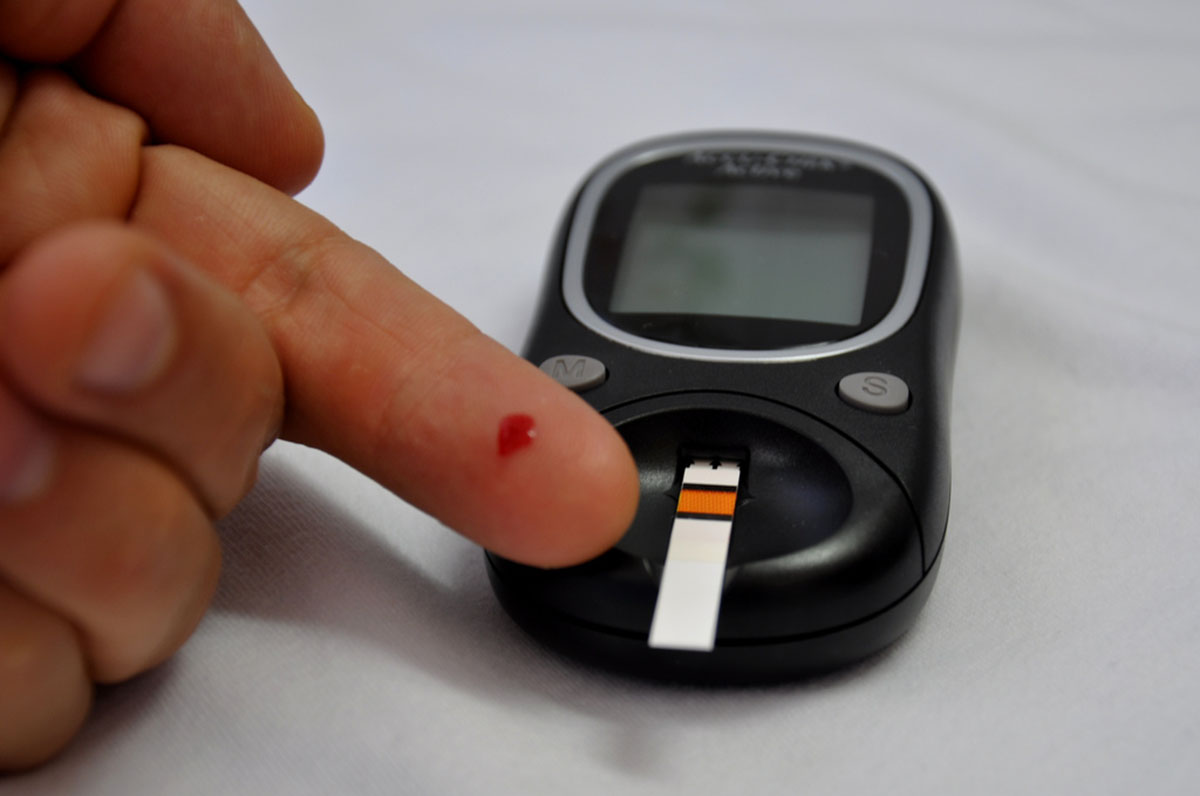This type of diabetes used to only affect adults since insulin resistance is linked with obesity, but children are also being affected due to increased calorie intake resulting in obesity in children. This is thought to occur due to an increased exposure to a westernized diet as well as easily accessible high fat, refined foods in urban areas.

Although there is no cure for type 2 diabetes, it can be managed with adequate calorie control and physical activity which help to maintain a healthy weight. Medication may need to be used if these aspects aren't adequate enough.
Symptoms of type 2 diabetes
The signs and symptoms of type 2 diabetes can take a long period of time to develop and patients may not even know that they have this condition. Patients need to try and be aware of the following:
- Increased thirst and water intake - increased glucose levels in the bloodstream causes fluid to drawn from the tissues of the body. This results in decreased fluid levels in these tissues which then leads to increased thirst.
- Increased urination - the fluid pulled into the bloodstream from the tissues needs to be expelled and thus the patient needs to urinate more frequently.
- Increased hunger - this is triggered when the body's tissues and organs become deprived of energy due to glucose not being moved into the cells.
- Initial weight loss - since the body struggles to metabolize glucose, it uses other sources of fuel such as muscle. Here, calories are then lost since the excess amount of glucose in the blood is lost through the urine.
- Fatigue.
- Slow healing wounds.
- Blurred vision.
- Areas of darkened skin especially in the areas of the neck and the armpits. This is called acanthosis nigricans.
READ Types of Diabetic Neuropathy
Risk factors for developing type 2 diabetes
The reason why people develop type 2 diabetes is not fully understood despite all the research that has been conducted on this disease. There are certain factor though which have been noted to increase the risk to developing type 2 diabetes. These include the following:
- Being overweight - the more fatty tissue one has, the higher the chance is of these cells becoming resistant to the effects of insulin.
- Fat distribution - if more fat is stored in the abdomen, then the chance of developing type 2 diabetes increases.
- Physical inactivity - less activity can lead to becoming overweight and then the above-mentioned issues come into affect.
- Having a family history of type 2 diabetes.
- Race - Black folk, Asians and Hispanics are more likely to develop type 2 diabetes than whites. The reason for this is unknown.
- Age - the chances of developing this condition increases with age, especially after age 45.
- Gestational diabetes - pregnant women who had gestational diabetes have an increased risk of developing type 2 diabetes after the pregnancy.
- Polycystic ovarian syndrome - PCOS increases the risk of developing type 2 diabetes.
Management Of Type 2 Diabetes
The treatment of type 2 diabetes includes the following aspects:
- Healthy eating.
- Regular physical activity and exercise.
- Regular monitoring of glucose levels.
- If necessary, anti-diabetic medication or insulin therapy.

Healthy eating
A dietitian's services need to be used in order to have a unique meal plan set up for the patient as factors like lifestyle, food preferences and health goals need to be incorporated. Advice can also be given on how the patient can count their carbohydrate intake as well as determine how many carbohydrates are needed. This is important as it helps to control and maintain one's glucose levels.
The dietitian will set the patient up with a meal plan which includes low glycaemic index (LGI) foods which tend to be foods high in fibre. These foods will raise glucose levels in the bloodstream slowly which allows for more stable glucose levels. These foods would include fruits, vegetables and whole-grain products. Patients would also have to reduce their intake of animal products, refined carbohydrates and foods high in sugar.
Regular physical activity and exercise
Regular aerobic exercise has been shown to benefit patients diagnosed with type 2 diabetes and it's suggested that patients choose activities which they might find enjoyable such as walking, hiking, skiing, swimming, etc.
Performing physical exercise for 30 minutes a day, 3-5 times a week has shown to increase the body's metabolism which helps maintain body weight and therefore control glucose levels better. Patients should be advised to start slow and then increase their physical exertion according to what they feel they can handle.
Once they are comfortable with aerobic exercises, they can then include resistance training such as lifting weights. The combination of the two types of exercises has been proven to be more effective in helping to control glucose levels than either one alone.
Regular monitoring of glucose levels
The patient's doctor needs to advise the patient regarding how often they would need to monitor their glucose levels. This will depend on what treatment protocol the patient is on, so, they may need to check glucose levels 1-2 times a day, or if they are using insulin then up to 4-5 times a day.
It's important for the patient to be given information regarding how glucose levels can change in response to food intake, exercise, as an effect of medication, due to illnesses and alcohol use.
Anti-diabetic medication and insulin
When diet and exercise are not enough to control glucose levels adequately, then oral medication and even insulin may be necessary for these patients.
READ Are You Risking Heart Disease with Diabetes Drug Avandia®?
Examples of type 2 anti-diabetic medications include the following:
- Metformin - this medication is the first line treatment used and helps to desensitize fat cells to insulin so that glucose may enter the cells. It also lowers glucose production in the liver.
- Sulfonylureas - they cause the pancreas to secrete more insulin.
- DPP-4 inhibitors - they help reduce glucose levels and have a modest effect.
- GLP-1 receptor agonists - these medications slow down digestion which lowers the appetite for refined and high carbohydrate foods.
- SGLT2 inhibitors - these are the newest medications available and their function is to reduce re-absorption of glucose by the kidneys.
Insulin therapy may need to be started, either in combination with the oral medications or alone, in patients whose glucose levels don't control well with the oral medication alone. The patient's doctor will have to discuss the use of insulin with the patient because the type of insulin used will depend on the patient's lifestyle, needs and financial situation.
- www.diabetes.org/living-with-diabetes
- www.mayoclinic.org/diseases-conditions/type-2-diabetes
- Photo courtesy of v1ctor: www.flickr.com/photos/v1ctor/10871254373/
- Photo courtesy of healthiermi: www.flickr.com/photos/healthiermi/7788255080/
- Photo courtesy of v1ctor: www.flickr.com/photos/v1ctor/10871254373/


Your thoughts on this